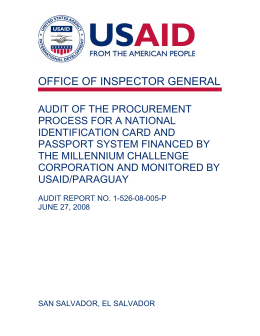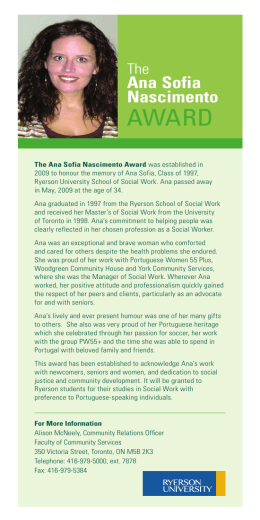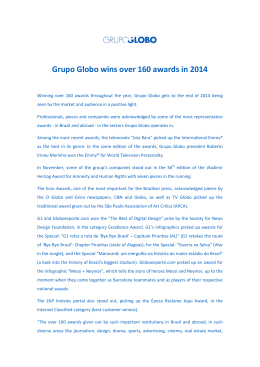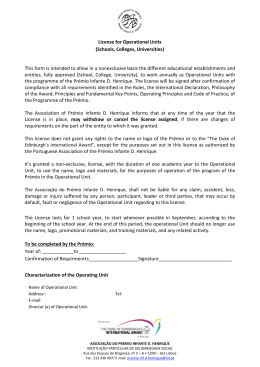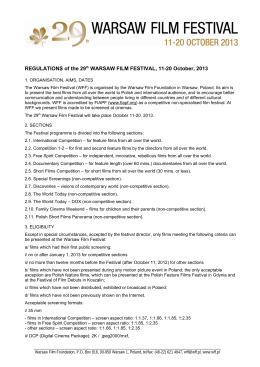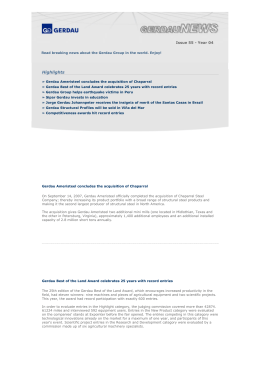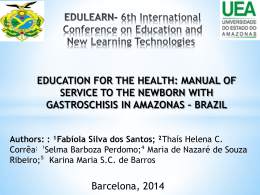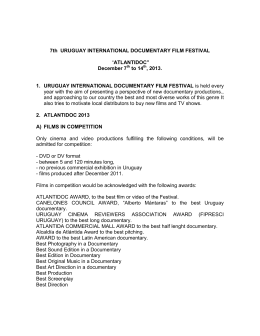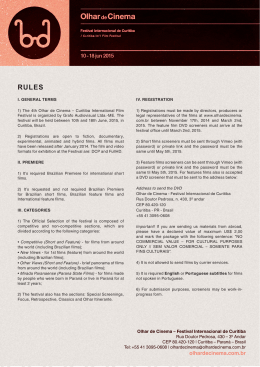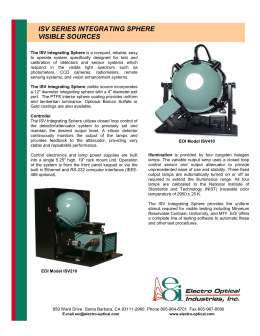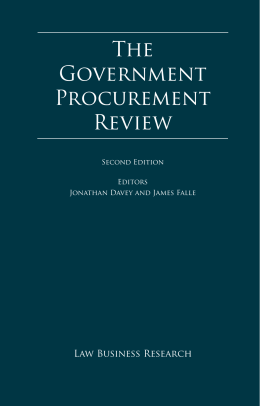USAID Development Innovation Accelerator Broad Agency Announcement for Global Health Challenges I. Overview A. This Broad Agency Announcement (BAA) seeks opportunities to co-create, co-design, coinvest, and collaborate in the development, testing, and scaling of innovative approaches that address critical global health challenges. The United States Agency for International Development (USAID) invites organizations and companies to participate with USAID, in cooperation with its partners, in response to a Global Health Challenge Addenda issued under this BAA, as described below, to provide innovative interventions and technologies that further the U.S. Government’s commitment to prevent and manage critical global health challenges. B. Federal Agency Name: The United States Agency for International Development (USAID), and administered through the Global Health Bureau. C. Opportunity Title: The USAID Global Health Development Innovation Accelerator BAA D. Announcement Type: This BAA serves to inform the public of the opportunity for funding from USAID, in cooperation with its partners, to address pressing global health challenges. Actual opportunities for funding and partnering will be issued as Global Health Challenge Addenda to this BAA. The terms of this BAA apply to each Global Health Challenge Addendum. Individual Global Health Challenge Addenda may have specific requirements for evaluation criteria and administrative information, such as the requirements for expressions of interest, concept papers, and response deadlines. E. Opportunity Number: BAA-GLOBAL HEALTH-2015 F. Authority: This BAA is issued under Federal Acquisition Regulations (FAR) Part 35.016(c). This is not a FAR Part 15 procurement. G. Catalog of Federal Domestic Assistance (CFDA) Number: 98.001, USAID Foreign Assistance for Programs Overseas. H. Response Date: The response date, as well as instructions to responders, is established by individual Addenda to this BAA. 1 II. Overall Purpose and Specific Rights Reserved for the Government under this BAA A. This BAA is a competitive approach to consider proposals that harness scientific research and innovation to help prevent and manage critical global health challenges, allowing USAID and other funding Partners to: 1. Reach out to potential partners with recognized expertise in relevant areas, and 2. Co-create, co-design, co-invest, and collaborate with partners. B. Multiple awards are anticipated. The amount of resources made available under this BAA will depend on the concepts received and the availability of funds. Some award types may not include any funding. C. This BAA reserves specific rights for the Government, in addition to rights described elsewhere in this document or by law or regulation, including: 1. The right to select for negotiation and award all, some, one, or none of the proposals received in response to this solicitation. 2. The right to make awards without discussions, or to conduct discussions and/or negotiations, whichever is determined to be in the Government’s interest. 3. The right to accept proposals in their entirety or to select only portions of proposals for award or co-investment. 4. The right to select for award an instrument type that is appropriate to the specific development context, partner relationship, and concept selected for award. Instruments types include but are not limited to contracts, grants, cooperative agreements, Global Development Alliance agreements, Development Innovation Agreements, Inter Agency Agreements, Government to Government Agreements, Donor to Donor Agreements, and Memorandums of Understanding. In addition, the Government may craft a new instrument type to meet the needs of a specific relationship. 5. The right to co-create projects with one or more submitter under this BAA, when it is in the best interest of the Government. 6. The right to request any additional, necessary documentation upon initial review. Such additional information may include, but is not limited to, a further detailed proposal, budget, and representations and certifications. 7. The right to fund or co-invest in proposals in phases, with options for continued work at the end of one or more of the phases. 8. The right to remove proposers from award consideration should the parties fail to reach agreement on award terms, conditions, and cost/price within a reasonable time, the proposer fails to timely provide requested additional 2 information, or the Government believes it is in its best interest. III. Opportunity Information A. Global Health Priorities USAID is committed to ending preventable child and maternal deaths and fostering an AIDS-free generation. PROBLEM: In 2012, 6.6 million children died before their fifth birthday. The year before, 289,000 women died during pregnancy or childbirth and there were 390,000 new HIV infections in children, with the odds in life already stacked against them. Infectious, life-threatening diseases like pneumonia, diarrhea and malaria are further exacerbated by endemic rates of malnutrition and poor access to health services. While the death of a mother is a tragedy in itself, it has devastating effects for the survival of her children, the economic stability of the family, and the productivity of the community. Children who are healthy avoid permanent disability and spend more time in school. Healthy children grow into healthy adults, who miss fewer days of work, earn more wages, and contribute to strong economies. CHALLENGE: To accelerate progress towards ending preventable child and maternal deaths and creating an AIDS-free generation by harnessing the power of science, technology, and innovation to provide new knowledge, tools, and approaches. USAID and its partners will work to rapidly implement solutions and create an environment for sustainability, scalability, and ultimately health impact. B. Global Health Challenge Addenda USAID will issue Addenda to this BAA that will present specific health-related challenges. These Addenda will focus on identified problems, solutions, scalability opportunities, feasibility studies, and other research and development initiatives to contribute to: (1) ending preventable child and maternal deaths ; or (2) creating an AIDS-free generation. As stated above, potential partners will respond to individual Addenda, not to this BAA. C. Collaboration. The intent of this BAA is to allow co-creation and co-design to the maximum extent to create high quality, effective partnerships with great efficiency in time and 3 resources. The types of collaboration include: 1. Co-creation. Co-creation occurs after an expression of interest is submitted, but before the concept paper is developed. The potential partner(s) and the Government, represented by the Activity Manager, work together to write and/or revise the concept paper, and jointly present the concept paper to the Global Health Review Board. 2. Co-design. Co-design occurs after the Global Health Review Board recommends the project for further development, and the Contracting Officer or Agreement Officer has determined the submitter to be an Apparently Successful Partner. At this point, the Contracting Officer or Agreement Officer may determine the general nature of the award type or the specific award type, depending on the nature of the project, to facilitate project design. During co-design, the Apparently Successful Partner and the Activity Manager will design the technical approach, general resource requirements, and management control of the project under the guidance of the Contracting Officer/Agreement Officer. 3. Co-invest. Co-invest refers to the Government’s strategic aim that the partnerships resulting from the individual BAA awards represent opportunities to achieve mutual or complimentary development goals of the Partner and USAID, and therefore embrace shared responsibility, shared risk, and shared resourcing. Shared resourcing may be accomplished though funding by both parties, either through cash resources or the exchange of other resources, both tangible and intangible, such as in-kind contributions, expertise, intellectual property, brand value, high-value coordination, and access to key people, places, and information. Co-investing does not require equally shared resourcing (such as 1:1 leverage), but rather resource contributions that are appropriate to the specific project’s objectives, considering the comparative advantages brought by the participation of each party and the award type. IV. General Criteria for Consideration A. Each individual BAA Addendum will specify the criteria for selection. This section provides general information on USAID’s priorities for project consideration. Where partnerships with other donors are involved, those joint priorities will be described in the relevant Addenda. Submissions are not evaluated against other submissions, but solely against the evaluation criteria from this BAA and applicable BAA Addenda. B. Decisions regarding USAID’s pursuit of a particular project, technology, or relationship are based on the available evidence, data, and resulting analysis. The Global Health Bureau and fellow donors, if applicable, seek solutions that can have a significant impact in global health and can achieve that impact sustainably at scale. C. Depending on the stage of development, USAID will consider different levels of risk, evidence, and data on the potential for impact and scale. D. At the initial stage of sourcing or prototype, the design of the innovation should be a new or dramatically-improved approach with the potential for significant impact at a lower cost and without any reduction in efficacy as compared to the current standard. 4 E. At the piloting and validation stage, the product or service must be viable and demonstrate significant impact, behavioral change, and customer demand (i.e. proof of concept). F. At the transitioning to scale stage, data and evidence must indicate that significant impact can be achieved at a lower price point, a business or other implementation model is being tested and sustainability demonstrated, any legal or regulatory challenges are understood as part of a market strategy, and the quality of the impact, product, or service will not be significantly affected by expansion or widespread adoption. G. Innovations that demonstrate such evidence will be reviewed for endorsement to scale across multiple countries. H. The reputations of organizations, their past performance, the managerial and technical ability of the person or team of people engaged in the endeavor are always significant considerations in assessing the potential and the risks associated with each award. V. Award Process. The award process under this BAA generally has the following steps: 1. Expression of Interest. Potential partners will submit an expression of interest in response to a Global Health Challenge Addendum. Expressions of Interest are generally short (2-7 pages) and contain information as outlined in the Global Health Challenge Addendum, such as the specific focus area, the expected impact, any partner and resource relationships, and proposed funding from USAID and/or other Partners. USAID will perform an initial review of the research and development idea presented in the expression of interest. Note that USAID may reach out to potential partners and request an expression of interest. 2. Development of the Concept Paper. For Expressions of Interest that are deemed to have merit by USAID, USAID will issue an invitation to collaborate to the potential partner. Working together, USAID and the potential partner will collaborate on a Concept Paper. It is during this phase of co-creation and co-design that the parties will begin to determine additional partners and resources to complement the project. The Concept Paper, generally 5-10 pages, will further detail and explain the project as initially provided in the Expression of Interest. 3. Review by the Global Health Review Board. All Concept Papers will be reviewed by the Global Health Review Board, which is comprised of health, business, and development experts from USAID, partners, and outside parties. The Review Board will review Concept Papers and recommend which applicants should be considered Apparently Successful Partners. Using its technical expertise, the Global Health Review Board will suggest revisions/additions to the project, and potential partners and resources. 4. Contracting/Agreement Officer Determination. The Contracting/Agreement officer will review the Global Health Review Board’s recommendations and consider other information, such as resource availability, preliminary partner responsibility assessment, and Agency priorities, and will make a determination that the respondent is an Apparently Successful Partner. The Contracting/Agreement Officer may also identify or narrow down the anticipated instrument type to facilitate project design. 5 5. Request for Additional Information. USAID will work with partners identified by the Global Health Review Board, and co-design the project and assist the partner to provide additional information with respect to the proposer’s technical approach, capacity, management and organization, past performance, and budget, as well as representations and certifications, as needed. 6. Additional Partners/Resources. During the project co-creation and co-design, both the Apparently Successful Partner and USAID (and other funding Partners, where applicable) will identify additional partners and resources, and whether additional mechanisms are necessary to implement the project. 7. Final Review and Negotiation. For USAID-managed projects, the USAID Contract/ Agreement Officer will engage in final review, negotiation, and determinations of instrument type, responsibility, cost reasonableness, etc., and will craft an award instrument with the Apparently Successful Partner. If the Apparently Successful Applicant and USAID cannot arrive at a mutually agreeable arrangement, the Contract/ Agreement Officer will cancel the project at no cost to the Government. 8. Award. For USAID-managed projects, the USAID Contract/ Agreement Officer will award the instrument. VI. Award Information A. Awards under this BAA will be based on responses to individual Addenda to this BAA, which provide the specific health-related challenge. B. No responses will be considered under this BAA until an Addendum has been issued; only submissions that are responsive to a specific Global Health Challenge Addendum will be considered. Any proposal, concept paper, or expression of interest received that is not in response to a Global Health Challenge Addendum will not be considered. C. Awards under this BAA will be made to Apparently Successful Partners on the basis of their ability to further the U.S. Government’s goal of addressing and significantly reducing the disease burdens of the developing world. USAID is seeking new and innovative applications of science, technologies, interventions, and partnerships that provide the best value to the Government and have the potential to substantially contribute to this goal. D. For USAID-managed awards, proposals identified for negotiation may result in a contract, grant, cooperative agreement, Global Development Alliance agreement, Development Innovation Agreement, Inter Agency Agreement, Government to Government Agreement, Donor to Donor Agreement, Memorandum of Understanding or alternative agreement type, depending upon the nature of the work proposed, the required degree of Government involvement, and other factors. The Government Contracting/Agreement Officer will determine award instrument type and negotiate instrument terms and conditions with selectees. USAID may select the award instruments it deems appropriate. E. Eligibility Information. Public, private, for-profit, and non-profit organizations, as well as institutions of higher education, public international organizations, non-governmental organizations, U.S. and non-U.S. government organizations, and international donor 6 organizations are eligible under this BAA, unless otherwise stated in the individual BAA Addendum. All organizations must be determined to be responsive to this BAA and sufficiently responsible to perform or participate in the final award type. F. Cost Sharing or Leveraging. Whether cost share and/or leverage are required will be determined by the individual BAA Addendum, final award type, and/or the mutual agreement of the parties. Nothing in this BAA precludes reasonable cost sharing, leveraging, or other exchange of resource arrangements, and proposers are encouraged to suggest creative approaches to resourcing projects. VII. Standard Clauses and Provisions of Award. The standard clauses or provisions for awards are generally prescribed by law and regulation, and will vary considerably by award type. Information regarding clauses and provisions will be offered to the proposer when the award type is identified. VIII. Obtaining the BAA and Addenda. This BAA and any future Addenda can be downloaded from http://www.grants.gov and http://www.fbo.gov. Issuance of this BAA does not constitute an award commitment on the part of USAID, nor does it commit USAID or any of its funding Partners to pay for costs incurred in the preparation and submission of proposals. Further, USAID reserves the right to reject any or all proposals received. 7 Saving Lives at Birth: A Grand Challenge for Development Addendum 01 to The USAID Development Innovation Accelerator Broad Agency Announcement (BAA) for Global Health Challenges SECTION A. PROGRAM DESCRIPTION Program Summary United States Agency for International Development (USAID), the Government of Norway, the Bill & Melinda Gates Foundation, Grand Challenges Canada, and UK’s Department of International Development (DFID) have joined together to launch the fifth round of Saving Lives at Birth: A Grand Challenge for Development. Together, we call for groundbreaking prevention and treatment approaches for pregnant women and newborns in poor, hard-to-reach communities around the time of childbirth. The estimated 2.6 million stillbirths, 2.9 million neonatal deaths and 287,000 maternal deaths that occur globally each year signal a major gap for intervention specifically around childbirth and the early postnatal period – a time when mothers and babies are most vulnerable and global progress in reducing mortality has been particularly poor. This gap in interventions is particularly acute in poor, underserved communities and among women who are disadvantaged. Innovative ideas that can leapfrog conventional approaches are critical in this area. If we are to accelerate substantial and sustainable progress in reducing maternal and newborn deaths and stillbirths at the community level- and contribute to the goals and targets of Ending Preventable Maternal Mortality and Every Newborn Action Plan - we need to support and scale innovative prevention and treatment approaches across three main domains: (1) Science & technology; (2) Service delivery; and (3) Demand-side innovation that empowers pregnant women and their families to practice healthy behaviors and be aware of and access health care during pregnancy, childbirth and the early postnatal period, especially the first two days after birth. We are particularly interested in investing in and supporting approaches that integrate the latest behavior change approaches with scientific and/or technological advances and service delivery platforms into radical solutions for widespread impact on maternal and newborn health. We encourage these ideas 1 that integrate scientific / technological, social and business innovation 1 to foster sustainability. Significant breakthroughs in innovation often come about when new ideas and disciplines are applied to long-entrenched problems. New approaches can transform insurmountable development challenges into solvable problems. To harness this ingenuity, we encourage partnerships that bring together diverse expertise from non-traditional partners, particularly those that include private sector partners. We are calling on for-profit companies, non-governmental organizations, academic/medical research institutions, faith-based organizations, civic groups and foundations across a range of disciplines to take up this challenge. Diverse partnerships also catalyze successful implementation at scale. Multidisciplinary/cross-sector teams are encouraged, where necessary, to ensure relevant scientific, social, and business expertise. Engaging private and/or public sector expertise will deploy stronger and more sustainable solutions. Bold ideas also need to be championed by effective, results-driven leaders with the capacity to convene and engage with key influencers. Where partnerships include innovators from low-and middle-income countries, we encourage the partnership to designate the low- and or middle-income country partner as the Project Manager/ Principle Investigator (PI). Critical to the sustained success of innovative solutions is a clear understanding of how best to implement them at scale. Applicants should take into account country programs, policies, and priorities. Development of new interventions, technologies or approaches and their successful scale up should complement efforts to strengthen health systems and address broader determinants of health including poverty, inequity, gender inequality, and access to water and sanitation resources, all of which are needed to address this grand challenge for development. Audacious but achievable ideas with the potential to lead to transformational change will be swiftly funded through at least one of three funding streams: (1) Seed Funds to develop and assess the feasibility of innovative ideas, (2) Validation Funds to introduce and validate the effectiveness of innovations to reach proof-of-concept, and (3) Transition Funds to transition innovations with demonstrated proof-ofconcept toward scale up. These investments in potentially high-return projects are aimed to identify and support transformational approaches to women’s and newborns’ health that can be scaled up to dramatically – and sustainably – reduce deaths and poor birth This approach is referred to as Integrated Innovation, for more information visit: http://www.grandchallenges.ca/integrated-innovation/ 1 2 outcomes for millions of women and newborns in the hardest to reach communities of the world. For more information on the Saving Lives at Birth program, please visit our website (www.savinglivesatbirth.net). Problem Statement The onset of labor marks the start of a high-risk period for both mother and baby that do not ease until at least 48 hours after birth. During this short period of time, an estimated 145,000 maternal deaths, 1.45 million neonatal deaths, and 1.2 million stillbirths occur annually. • For the mother, the critical conditions occurring during pregnancy and after labor include hemorrhage, hypertensive disorders such as preeclampsia and eclampsia, serious infections, and obstructed labor. • For the newborn, the critical conditions occurring after birth are serious infections (sepsis, meningitis, pneumonia, and diarrhea), intrapartum-related deaths (“birth asphyxia”), and complications of preterm birth. • Important causes of stillbirth include intrapartum asphyxia, maternal and antepartum hemorrhage, fetal bacterial infection, obstructed labor, syphilis, and malaria. • Important causes of maternal and newborn complications result from births that are spaced too closely. Almost all of the deaths during this high-risk period occur in low- and middleincome countries, especially in sub-Saharan Africa and South Asia, where access to quality care is also the poorest. Evidence-based interventions—such as skilled attendance at delivery; emergency obstetric and newborn care; parenteral administration of drugs; blood transfusions; kangaroo care for newborns; early initiation of breastfeeding; hygiene; and rapid diagnosis and early treatment of infections—do exist to manage complications around the time of birth. However, these interventions are not always available to the women and children who need them. Since many opportunities to optimize birth outcomes occur before and after the time of birth, it is also important to improve women’s access to evidencebased prenatal care, family planning resources (including contraception), birth spacing and delay, proper nutrition, and postnatal care. In resource-poor settings, care at the time of birth is further impeded by the fact that people often lack material resources, electricity, clean water and adequate transportation to travel to hospitals, and that there are few trained health professionals or facilities capable of providing basic and comprehensive emergency obstetric care. Where trained professionals and facilities exist, quality of care can be further impeded by poor management and supervision, nonfunctioning supply chains, and lack of adherence to standard guidelines and protocols. Finally, gender norms, cultural beliefs, and traditions that limit a woman’s autonomy and decision making power, may also prevent women and their families from practicing healthy behaviors, and seeking and receiving lifesaving care at and around the time of birth. 3 Taken together, these limitations leave poor, underserved women—who have the greatest geographical, financial and structural challenges in securing quality care at the time of delivery—and their infants at the highest risk of poor pregnancy outcomes. Objective For the purposes of this Addendum, the Saving Lives at Birth partners are seeking creative solutions to address roadblocks to healthy pregnancies and births in three major domains, alone or in combination: • Science & Technology: lack of dissemination and uptake of the most recent scientific evidence applicable delivery of care in low-resource settings; lack of affordable and effective medical solutions appropriate for the community or clinic setting; • Service Delivery: lack of quality health services, including inadequate numbers of trained, motivated, equipped and properly located and supervised health staff and caregivers; operating without adherence to up-to-date guidelines or evidence-based practices and limited by operational bottlenecks; • Demand: lack of opportunity, ability, motivation, and empowerment to access health care or adopt healthy behaviors before, during, and after pregnancy. Since many opportunities to optimize maternal and birth outcomes occur before and after the time of birth, solutions do not need to focus solely on the window between labor and 48 hours post-delivery. Where life-saving interventions exist but have not been successfully deployed or implemented, we invite bold ideas for overcoming specific barriers to scaling up. What We Are Looking For Interventions that: • Substantially increase demand for and access to primary health interventions for women and newborns (for example, by at least 50 percent for interventions with low coverage); • Substantially improve the quality of care as measured by health outcomes; and • Improve and sustain healthy behaviors. Solutions should: • Be "off the beaten track," daring in premise, and clearly differentiated from standard practice; • Enhance uptake, acceptability and provide for sustained use (potential for sustainability as defined as cost-recovery, sustained use, and sustainable impact); • Be low-cost or highly cost-effective; • Have a strong likelihood of achieving a substantial impact on one or more important adverse maternal, fetal, or neonatal health conditions described in the problem statement above; • Be scalable in resource-poor settings; and • Be able to be monitored, measured and evaluated. 4 Strong Areas of Interest We are particularly interested in novel innovations in any of the following areas, but not limited to: • • • • • • • • • Approaches to prevent stillbirth and preterm birth, including better monitoring and management of labor Approaches targeting individual and collective behaviors and social norms (particularly gender inequality) to increase access, uptake and retention in antenatal care, facility based labor and delivery and postnatal care, including healthy timing and spacing of pregnancies through family planning and postpartum family planning, early initiation of breastfeeding, Prevention of Mother to Child Transmission (PMTCT) of HIV and other HIV/AIDS prevention, care and treatment services for pregnant women, infants and children. Programs to assess and address the challenges of approaches or technologies proven to work in high-income settings but unproven in low-income settings such as antenatal steroids, progesterone, etc Simple, low-cost technologies adapted or designed for use in hard-to-reach, low-resource settings (e.g., simpler or portable technologies for newborn resuscitation, identification and care of preterm and low-birth weight newborns, infection management, prevention and treatment of postpartum hemorrhage, etc) Mechanisms to improve referral and transportation of mothers with complications and sick newborns Ways that Information and Communication Technology (ICT) can be used to improve health, healthcare delivery, and accountability for maternal and newborn health in low-resource areas in new, measurable, low-cost and integrated ways. Interventions that reduce barriers to accessing or receiving appropriate treatment and evidence-based care, including those that increase coverage of care around the time of birth and target specific health system bottlenecks Solutions that recognize the critical roles of the end-user in the development process. Solutions that include co-funding from partners is encouraged, as this demonstrates a key stake in project success by project partners, as well as demand for the solution We encourage integrated solutions that bring together cutting-edge science and/or low-cost technologies, service delivery, and demand innovation in transformative new ways. Innovation Pipeline The Partners seek solutions across the three stages of development (seed, validation, or transition) described below. Under this Addendum, the Partners will place a greater focus on identifying and supporting innovations to reach scale. Seed Funds • Focus: Seed funds will be provided to support the development and feasibility assessment of ideas capable of impacting health outcomes for pregnant women and their babies in low-resource settings. It is anticipated that projects aiming to develop early-stage prototyes and/or conduct feasibility assessments, including those for scientific advancements, will enter the Saving Lives at Birth program at this stage. 5 • • Funding: Funding levels will correspond to the scope and scale of the innovation but will generally be $250,000 USD per project. Length of Award: Seed projects will be funded for up to two (2) years. Validation Funds • Focus: Validation funds will be provided to support the introduction and validation of prototypes and innovative approaches in achieving promising health outcomes for pregnant women and their babies in low-resource settings (i.e. reaching proof of concept). • Eligibility: Proposed solutions for validation funds may have been preliminarily tested (but previous data is not required), but should not be current standard practice; however, innovative variations on existing approaches may be considered (e.g., a new means to deliver an existing service or a new way to make an old model demonstrably more effective or cost effective). Previous Saving Lives at Birth seed awardees are eligible to apply. However, applicants do not need a previous seed award to be eligible for validation funds. • Funding: Funding levels will correspond to the scope and scale of the innovation but will generally be $250,000 USD per project. • Length of Award: Validation projects will be funded for up to two (2) years. Transition Funds • Focus: Transition awards are intended to further develop, refine and rigorously test the impact of integrated solutions that have strong evidence in a controlled or limited setting of promising health outcome(s) and/or the reduction of significant barrier(s) to health and demand for the solution. These integrated solutions have the potential to credibly scale to improve the lives of millions of pregnant women and newborns in multiple countries. • Eligibility: Projects for transition funds must have strong evidence in a controlled or limited setting of promising health outcome(s) and/or the reduction of significant barrier(s) to health (i.e., proof of concept) and demand for the solution to warrant expanded support. Submissions must provide sufficient and credible evidence to demonstrate their proof of concept and the link to positive impact on maternal and newborn health. Without sufficent evidence, prospective partners should consider submitting an expression of interest for another type of award (seed or validation). Transition Funds will be limited to integrated solutions only (approaches that integrate science and technology, service delivery, and demand creation domains in innovative ways). All three components (science and technology, service delivery, and demand creation) do not need to be novel; the innovation may rest in the integration of the components that enhances the effect on improved birth outcomes over that of each component in isolation. Note that components should be integrated in a meaningful and complementary manner, merely combining three stand-alone components into one project is not considered an integrated solution. A key component of achieving sustainability and scale is partnerships. Reviewers will look for partnerships that contribute expertise relevant to the scale and sustainability of the idea. Co-funding from partners is encouraged, as this demonstrates a key stake in project success by project partners, as well as demand for the solution. • Funding: Funding levels will correspond to the scope and scale of the innovation but will not exceed $2 million USD per project. 6 Some innovations may require testing at various levels (local, regional, and across several regions) in the transition stage. Strong justification should be made as to how the scale of implementation corresponds to the scope of the project. Length of Award: Transition awards will be funded for up to four (4) years. o • SECTION B: SUBMISSION GUIDELINES AND INSTRUCTIONS Submission Overview and Timeline Expressions of Interest must indicate the research or development idea which will work towards discovering potential solutions with impact upon the Objective, above, by increasing knowledge and understanding of potential solutions and their implementation at scale, utilizing scientific discoveries or advancements in technology, processes, methods, devices, or techniques, advancing the state of the art, or using scientific and technical knowledge in the design, development, testing, or evaluation of a potential new product or service (or of an improvement in an existing product or service). The following are instructions for how proposals shall be submitted and reviewed. 1. Expressions of Interest (EOI) shall be submitted by March 27, 2015 2:00 p.m. EST. 2. Beginning mid-February, EOIs shall be submitted electronically via www.savinglivesatbirth.net/apply. More guidance and instructions on submission can be found on our website. For all submissions, it is the applicant’s responsibility to ensure that files are complete and transmitted by the deadline. The applicant bears full responsibility for data errors or omissions. 3. If initial review indicates the EOI merits further consideration , selected organizations or consortia may be invited, individually or in combination, to discuss their proposals with the Saving Lives at Birth partners. This process may result in applicants being invited to submit concept notes and attend the DevelopmentXChange in Washington, DC July 21-22, 2015. DevelomentXChange: To take advantage of the presence of a variety of development actors together in one place, the Partners will host the DevelopmentXChange in Washington, DC (estimated to be July 21-22, 2015). Finalists will display their innovations/innovative ideas in an open marketplace. As part of this event, finalists will have the opportunity to network with each other, with other development experts and innovators, and other potential funders. Finalists will also participate in a series of workshops tailored to the participants’ needs such as business planning, fundraising and monitoring and evaluation. The Partners will cover the cost for one representative from each finalist team to attend the DevelopmentXChange. Only one representative may attend the closed sessions of the DevelopmentXChange. 4. Validation and final selection An Executive Committee or Governing Board for each of the respective funding mechanisms will independently review and validate the panel recommendations to ensure consistency with applicable policies, procedures and practices of the respective funding organization, inclusive of past 7 performance evaluation. As per the BAA, the Partners may engage in codesigning the project and assisting the partner to provide additional information with respect to the proposer’s technical approach, capacity, management and organization, partnerships and resources, past performance, and budget, as well as representations and certifications, as needed. The final decision regarding awards is the responsibility of the respective funding organization. Unsuccessful Projects: Applicants with unsuccessful projects will receive notice that their project was not selected. Information Protection Saving Lives at Birth’s goal is to identify and scale up transformative prevention and treatment approaches for pregnant women and newborns around the time of birth. Understanding the sensitive nature of submitters’ information, USAID will work with organizations to protect intellectual property. Expressions of Interest should be free of any intellectual property that the submitter wishes to protect, as the EOI will be shared with Saving Lives at Birth partners as part of the selection process. However, once submitters have been invited to engage in further discussions, submitters will work with USAID to identify proprietary information that requires protection. Therefore, organizations making submissions under the BAA Addendum hereby grant USAID a royalty-free, nonexclusive, and irrevocable right to use, disclose, reproduce, and prepare derivative works, and to have or permit others to do so to any information contained in the expressions of interest submitted under the BAA Addendum. As noted above, if Saving Lives at Birth engages further with the organization regarding its submission, the parties can negotiate intellectual property protection for the organization’s intellectual property. Organizations must ensure that any submissions under the Addendum are free of any third party proprietary data rights that would impact the license granted to USAID herein. Submission Instructions Submitters should use the following instructions and follow the simplified submission format. • • • All EOI must be written in English. EOI should be written clearly and with minimal jargon as reviewers will possess a variety of backgrounds and technical expertise. The EOI must be no longer than 3 pages. Any charts or tables included with the EOI will be considered within the page limits. References and citations to academic publications or other resources are not required but are encouraged. If included as a separate page as end notes, references and citations are not included in the page limits. Biographical descriptions and letters of support are not included in the stated page limits. All EOI must use a standard font no smaller than11-point font with one-inch margins. 8 Applicants are strongly encouraged to adhere to the submission instructions and format found at: www.savinglivesatbirth.net/apply. This guidance includes presentation instructions for the technical application andsupporting information (biographical descriptions and letters of support) Competitive applications will address: • The anticipated results to be achieved within the lifetime of the award • The potential scale the innovation could reach • The context in which the solution will be delivered (e.g., the user’s needs and wants; community characteristics; connectivity with health authorities and existing health facilities; local leadership, government and civil society buy-in) • How the solution will have a substantial impact on maternal and newborn health, including how the solution will (or can) be adapted to new environments for even greater impact • Previous demonstrated proof-of-concept, if applicable • How the solution will be delivered/administered (e.g., frequency of service, personnel, etc.) • How the solution will improve upon the best existing alternative(s) available today and/or standard practice • How the solution will (or can) integrate science and low-cost technology, service delivery and demand • How the solution addresses underlying determinants of seeking maternal healthcare • How the solution will work to avoid potentially harmful unintended consequences as applicable • How the organization is positioned to carry out the work successfully (including organizational and financial sustainability) • The commitment of partners that contribute expertise relevant to the scale and sustainability of the idea as applicable • The duration of the time required to implement proposed solution • A concrete plan for measuring, evaluating, and sharing results • How the solution addresses determinants of health, public policies, and other ethical / social / cultural / legal frameworks that could limit uptake • How the solution incorporates financial models or business systems to develop and deliver the solution affordably and sustainably Evaluation Criteria Seed, Validation, and Transition proposals will be evaluated in separate tracks based on the following criteria. Pioneering innovation is significantly more important than the other technical criteria. The final award selection will be based on a combination of technical strength, cost, and pioneering innovation. 1. Innovation Demonstration that the proposed solution offers a creative approach to the problem outlined in the challenge and is clearly differentiated from existing approaches. 2. Sustained Impact Demonstration that the proposed solution is relevant to the problem outlined 9 in the challenge and potentially transformative, with attention to how impact achieved could be sustained following the end of Saving Lives at Birth support. 3. Execution Extent to which the proposed project objectives and interim milestones are appropriate, feasible and technically sound within the budget and time allocated for either seed, validation or transition funding. 4. Evaluation Plan Extent to which the project has proposed a clear, measurable and realistic monitoring and evaluation plan, including attention to key indicators relevant to Saving Lives at Birth. 5. Organizational Capacity and Partnerships Demonstration that the applicant and its partners have the necessary depth and breadth of talent, experience and leadership in order to execute their project. 6. Pioneering Proposals with highest potential to achieve sustainable, groundbreaking impact and/or to become true game changers in the field. 10
Download
